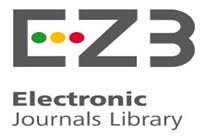IJSEA Archive (Volume 2, Issue 8)
International Journal of Science and Engineering Applications (IJSEA) (Volume 2, Issue 8 - August 2013)
M-Learning for children of 5-12 age groups in rural area of India
Keywords: mobile learning, android , NIMUs, animation, Informal learning.
Internet has touched the urban and educated society in a big way. However the rural and less educated society is yet to
enjoy the benefits. In India there are large number of non Internet Mobile users (NIMUs) -7.5 NIMUs for every internet users .It is
hence essential that applications and products are designed with care and with usability in mind. Our own nation with a 1.2 billion
population offers a business huge opportunity to develop socially relevant mobile applications for Rural India. Hence the primary
objective of the paper is to reach to the NIMUs with mobile phone technologies and applications. The paper focus on implementing
the M-learning application for NIMUs which display the animation of story and the voice will be played in the background .Beside
the animation of story, the application has choices to display the story ,record the voice while reading the story ,videos of story and
quizzes about the story , by keeping in mind the mental growth of child 5-12 age group.
[1] An Exploratory Study of Unsupervised Mobile Learning
in Rural India, Anuj Kumar1, Anuj Tewari2, Geeta
Shroff1, Deepti Chittamuru3, Matthew Kam1 & John
Canny2 Human-Computer Interaction Institute, Carnegie
Mellon University, USA Computer Science Division and
Berkeley Institute of Design, University of California,
Berkeley, USA School of Information, University of
California, Berkeley, USA
[2] Azim Premji Foundation.The Social Context of
Elementary Education in Rural India, 2004.
http://www.azimpremjifoundation.org/downloads/TheSo
cial ContextofElementaryEductaioninRuralIndia.pdf
[3] Bell, M., Chalmers, M., Barkhuus, L., Hall, M., Sherwood,
S. Tennent, P., Brown, B., Rowland, D., and Benford, S.
2006. Interweaving mobile games with everyday life. In
Proc. CHI '06, ACM Press, NY, USA.
[4] Brown. H. T., The role of m-learning in the future of elearning
in Africa, 2003, ICDE World Conference.
[5] Cameron, L. Teaching languages to young learners.
Cambridge University Press 2005
[6] Clough, G., Jones, A., McAndrew P., Scanlon, E.
Informal learning evidence in online communities of
mobile device enthusiasts. In Mobile Learning:
Transforming the Delivery of Education and Training.
Athabasca, AB: Athabasca University Press.
[7] CNN. Weapon against epidemics: cellphones.
http://edition.cnn.com/2009/TECH/science/06/16/cellpho
nes.health.disease/H (Last accessed September 17, 2009).
[8] Gregson, J., Jordaan, D., Exploring the challenges and
opportunities of m-learning within an international
distance education programme. In M. Ally (Ed.), Mobile
Learning:Transforming the Delivery of Education and
Training. Athabasca, AB: Athabasca University Press.
[9] Jarkievich, P., Frankhammar, M., and Fernaeus, Y. In the
hands of children: Exploring the use of mobile phone
functionality in casual play settings. In Proc. Mobile HCI
2008, ACM Press, NY, USA.
[10] Kam, M., Kumar, A., Jain, S., Mathur, A., and Canny, J.
Improving literacy in rural India: Cellphone games in an
after-school program. In Proc. of IEEE/ACM Conference
on ICTD’09.
[11] Kenny, R., Park, C., Kenny, J., Burton, P., Meiers, J.
Using mobile learning to enhance the quality of nursing
practice education. In M. Ally (Ed.), Mobile Learning:
Transforming the Delivery of Education and Training.
Athabasca Press.
International Journal of Science and Engineering Applications
Volume 2 Issue 8, 2013, ISSN-2319-7560 (Online)
www.ijsea.com 165
[12] Klopfer, E. Augmented Learning: Research and Design
of Mobile Educational Games. The MIT Press, 2008.
[13] Koole, M. A Model for Framing Mobile Learning. In M.
Ally(Ed.), Mobile learning: Transforming the delivery of
education and training. Athabasca, AB: Athabasca
University Press.
[14] Rekkedal, T., Dye, A. mobile distance learning with
PDA’s:Development and testing of pedagogical and
system solutions supporting mobile distance learners.
The International Review of Research in Open and
Distance Learning, 2007.
[15] Scanlon, E., Jones, A., and Waycott, J. Mobile
technologies:prospects for their use in learning in
informal science settings. In Journal of Interactive Media
in Education 2005/25. ISSN:1365-893X
[jime.open.ac.uk/2005/25].
[16] WANG Feng-lin,LI Wang-xiu,LI Hua-xin.Quantitative
analysis of domestic Articals on M-learning[j].Modern
Education Technology .2008,18(12),62-66.
[17] World Bank. Surveying the use of mobile phones in
educationworldwide.http://blogs.worldbank.org/edutech/
surveying-the-use-of-mobile-phones-in-educationworldwide
(Last accessed September 14, 2009).
@article{amrapali02081002,
title = "M-Learning for children of 5-12 age groups in rural area of India ",
journal = "International Journal of Science and Engineering Applications (IJSEA)",
volume = "2",
number = "8",
pages = "162 - 165",
year = "2013",
author = " Amrapali Mhaisgawali ",
}










